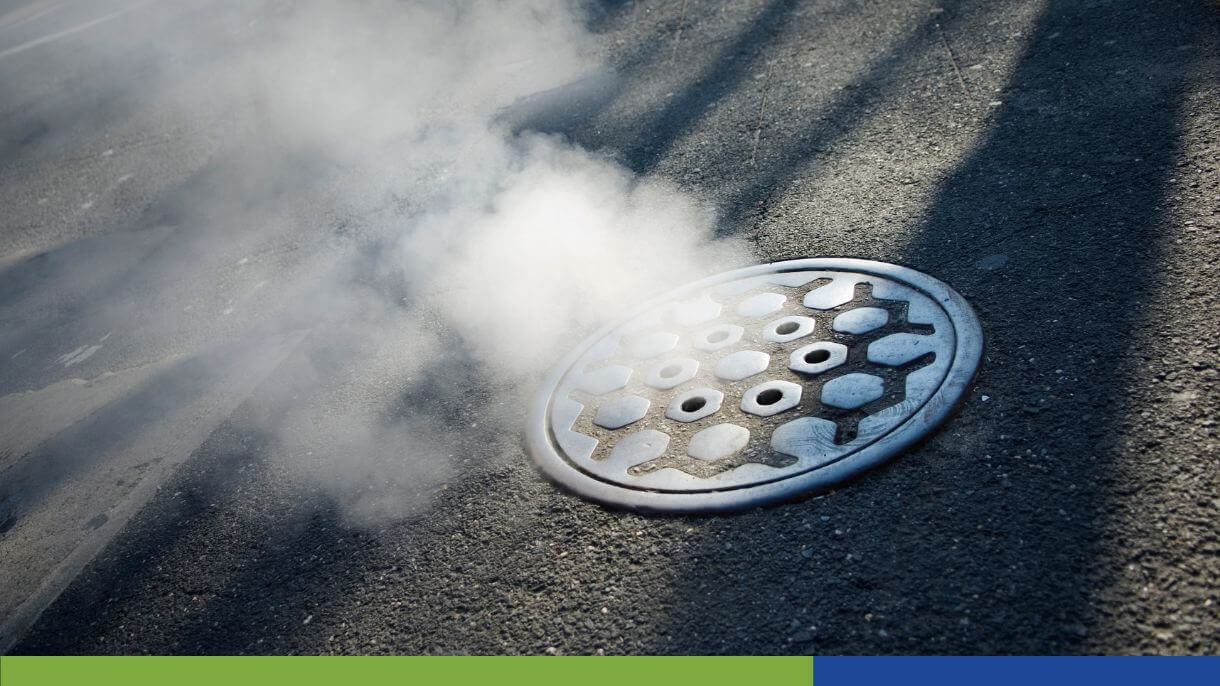
What is Sewer Smoke Testing?

Sewer smoke testing is a process that helps identify problems within the sewer collection system. It involves the introduction of non-toxic smoke into the sewer lines to detect leaks, cracks, and other defects.
The smoke is generated by a machine, which then pumps the smoke into the sewer lines through a manhole. The smoke is forced through the sewer lines, and if there are any leaks, cracks and other defects, the smoke will escape through them and come out through the surface of the ground. If you ever see smoke coming out of manholes in the ground, there could be smoke testing in your area.
Smoke testing is usually done in the Spring or Summer months when the conditions are dry and the ground is not saturated which allows cracks to open. This enhances the visibility of smoke for the testing teams.
Sewer smoke testing is an effective way to identify problems within the sewer collection system, such as broken or cracked pipes, improperly sealed connections, sewer clean outs without caps, and other defects that can cause problems like sewage backups and odors.
The process of smoke testing is not harmful to the environment or people. The smoke is non-toxic and does not pose any health risks. The smoke is also not flammable, so there is no risk of fire.
Once the smoke has been introduced into the sewer system, technicians will inspect the area to identify any leaks or other defects. They use a variety of tools, including cameras and other equipment, to identify the source of the problem.
If a leak or other defect is identified, repairs can be made quickly and efficiently. This helps prevent further damage to the sewer system and ensures that it continues to function properly. Regular testing is essential to ensure the sewer system is functioning properly and to prevent costly repairs and damage to the environment.